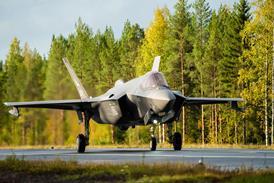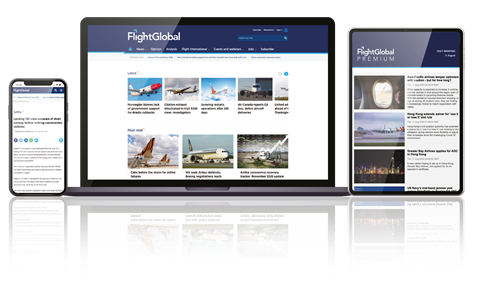For three decades, Concorde was the transport of choice for high-flyers doing business between London and New York. When the supersonic service ended in 2003, the premium cabins of British Airways and the other major carriers took up the slack. But in the past 18 months, a new option has emerged for the 450,000 or so premium passengers a year who commute between the world's financial capitals but are not quite in the Falcon, Gulfstream or Global league: business-only airlines.
 |
|---|
EOS flies Boeing 757-200s from London Stansted to New York JFK |
So far, three all-premium scheduled carriers have entered the US-UK market. Eos Airlines, Maxjet Airways and Silverjet have different aircraft, cabin layouts, business models and ambitions. What they all promise customers is personal space on board and, by avoiding Heathrow and Gatwick, a faster, less stressful on-ground experience in the UK than the network airlines - helped by not having to share the boarding and deplaning with 200 or more economy passengers.
The impact of Eos, Maxjet and Silverjet on the world's most lucrative premium air travel market is not yet causing the airline giants to lose sleep. Between them, the business-only operators carry just a few hundred passengers a day. Neither can they offer the connections and alliance benefits the major carriers can. But they all say they have a growing customer base and plan to expand their route network.
Stansted-based Maxjet already serves Las Vegas, Los Angeles and Washington Dulles as well as New York. Eos, also based in Stansted, intends to launch New York to Paris next year and Luton-based Silverjet is looking at Chicago and Miami, India and South Africa.
Their arrival on the market comes as Europe and the USA prepare to put into effect the Open Skies agreement, which will allow carriers from either side of the Atlantic to offer services to and from any European Union airport. British Airways, Ryanair and Virgin Atlantic Airways all say they are planning to launch routes to the US from continental cities in the next one to three years, with BA and Virgin looking at all-business class services.
Recently, KLM and Swiss International Air Lines started their own all-business transatlantic services from airports in their home countries, operated by PrivatAir and based on a successful model launched in 2002 by the Swiss charter specialist and Lufthansa.
Pioneer
PrivatAir is the pioneer of the all-business transatlantic sector. Originally an in-house flight department for the Latsis Group, the Zurich-based carrier branched into third-party VIP charter in the 1990s with three Boeing Business Jets (BBJ), before looking for a way of "applying the low cost model to the high yield market", says Paul de Salis, who joined the company from Virgin Express as head of scheduled services. It approached some of Europe's flag carriers with the concept of an all-business, single-aisle transatlantic service.
 |
|---|
"We discussed various models, and we finally settled on a partnership model with Lufthansa doing the connectivity, distribution and network, which would be hard for us to do as a small carrier," says de Salis.
PrivatAir and Lufthansa launched their Dusseldorf to New York Newark service with one 48-seat BBJ1, later replacing it with an A319LR, with another A319LR flying from Dusseldorf to Chicago (a hub for Lufthansa's Star Alliance partner United Airlines). The BBJ was moved onto another new route, Munich to Newark. By this time, other carriers were getting interested and in 2005 PrivatAir launched Zurich to Newark with Swiss, this time using a 56-seat 737-800-based BBJ2. Later that year, a deal with KLM saw Amsterdam to Houston join the portfolio, with a BBJ1.
Wet-leasing
PrivatAir leases the aircraft, then effectively wet-leases them to the airlines - branded in PrivatAir colours. It provides the crew, catering and in-flight entertainment (hand-held modules), handles the maintenance and takes on all the operational risk. The airline markets the service and sells the tickets.
"Selling aircraft seats is not something we have ever done. The strength of a global carrier is its distribution and network," says de Salis.
 |
|---|
| Maxjet's CEO Bill Stockbridge says: "Our concept was an all business carrier with affordable fares." |
In the past five years, PrivatAir has completed 13,000 scheduled flights and is now making 60 Atlantic crossings a week. Ironically for PrivatAir, the more successful a route becomes, the more likely the airline is to replace its narrowbody service with a widebody, retaining the premium passengers but adding economy seats to top up revenues. However, de Salis says PrivatAir is unfazed about the possibility: "It's something we would be positive about. As the market grows to when the narrowbody can be swapped for a widebody, we can move to another route."
US-owned Eos was the first all-business carrier to start out of the UK, launching its New York Kennedy service from Stansted in October 2005. It offers a very different service to its two main competitors in that its four Boeing 757-200s have just 48 flatbed seats in a "staggered" two-plus-two configuration (Maxjet and Silverjet fly 767s with around 100 seats), giving each passenger 1.95m2 (21ft2) of "personal space", says Toby Joseph, executive vice president global sales. Pricier and more exclusive than its rivals, it is pitched firmly at the corporate market in the financial services industry.
"Eighty percent of our passengers are corporate travellers," says Joseph. The aircraft were sourced from Mexicana and outfitted by Evergreen Air Center in the USA. Their average age is 12 years.
Eos - whose chief executive is former American Airlines executive Jack Williams - now crosses the Atlantic 32 times a week with up to three departures a day. Each flight is 70% full - "well within our business plan", says Joseph. A fifth 757 is on order and the airline is looking to add two more over the next 18 months, by which time it plans to be operating a Paris-New York service.
Limo Service
The carrier makes great play of its easy connection to London's City financial centre - its regular passengers qualify for a limo service others are given free tickets for the Stansted Express train service - and there is a 45-minute check in, with passengers escorted through security to a dedicated lounge.
 |
|---|
| Pricier than rivals, EOS offers 48 flatbed seats per flight in a two-plus-two configuration |
"Stansted has been a huge factor. It means our boarding experience is totally different. We've taken away the crowds," says Joseph.
A month after Eos launched, it was joined at London's third airport by Washington Dulles-based Maxjet.
"We came up with the concept of an all-business class carrier with affordable fares," says chief executive Bill Stockbridge. Unlike Eos's emphasis on corporate clients used to travelling business and first class with regular airlines, Maxjet has gone after a hybrid business-leisure market of passengers tempted by British Airways' or Virgin Atlantic's World Traveller Plus or Premium Economy cabins.
The airline, which posted $41 million revenues in its first year of operation and last week floated on London's Alternative Investment Market (AIM), has gone for a spread of routes rather than single-route frequency. It flies six times a week to New York Kennedy, four times each to Los Angeles and Washington DC and three times to Las Vegas (rising to four in September), and offers fares from $1,500.
"As a low-fare, all-business-class airline, a lot of what we are trying to do is persuade people out of economy with an extra level of service," says Stockbridge.
Maxjet operates five 767-200ERs - each with 102 "traditional business class leather seats", offering a 60in (152cm) pitch and reclining to 170°. Like Eos, it offers passengers portable DVD players with in-flight movies. Its leased aircraft are older than Eos's - "late 1980s vintage" - and have been sourced from Qantas, ILFC, Kuwait Airways and Air Mauritius, and converted by Alitalia Engineering & Maintenance, Shannon Aerospace and Evergreen. Stockbridge says the airline's aim is "slow controlled growth", with the possibility of new routes from Stansted, including another US West Coast city, Florida, Dubai and Johannesburg.
newcomer
Silverjet is the newcomer of the trio: it launched daily flights from London Luton to New York Newark in January 2007. It has just taken delivery of its second 767-200, also configured with 100 flatbed seats, and now offers morning and afternoon westward flights, with 19:30h and 22:00h departures back to the UK. Its business model is not very different to Maxjet's in that it does not directly target the corporate account market. Founder and chief executive Lawrence Hunt says he came up with the idea for an all-premium carrier after spending 20 years travelling the world when he ran small businesses in the travel and technology sectors. "When I flew, I had the choice of paying out of my own pocket £500 ($986) on economy or £4,000 ($7,890) on business," he says.
"We ran through some models, looking at what happens when you strip out economy. We believed we could offer fares at under £1,000 ($1,973), aiming at SMEs [small and medium-sized enterprises] and the affluent leisure market."
Hunt had looked at financing and decided he did not want an "outsider owning 70% of my business and interfering with the design of headrests and cabin crew uniforms". Instead he raised £25 million ($49 million) on the AIM in May 2006, another £26 million from a further share offering, and acquired a small airline, Flyjet, to obtain an air operators certificate. With load factors above 60% and rising, he says he has the funds in place to "see us through to 10 aircraft in three years" and plans to launch services to US cities including Chicago, Miami and Los Angeles, as well as to India and South Africa.
Small is better
Like his colleagues at Eos and Maxjet, Hunt believes using a smaller UK airport makes sense. "Luton has been enormously creative and supportive. It means we can offer a 30-minute check in and can take all the irritable things out of flying long haul," he says. Another unique selling point, the company believes, is its ratio of one cabin crew member to 10 passengers.
All the new entrants to the market are convinced that the transatlantic business market is far from saturated. "There are 28 New York flights a day out of London alone," says Hunt. "There is still a lot of scope for growth."
Joseph says that with the transatlantic premium market expanding by 10% a year, there is "plenty of room for new players". It is a view that the new players' established rivals seem to agree with. "We haven't seen any impact at all," Virgin's director of external affairs Barry Humphreys recently told Flight International's sister magazine Airline Business Daily. "At the moment our [premium cabin] load factor is at record levels."
Open Skies should see an expansion of the market on the Continent too. "It's a huge opportunity for carriers to go into markets that have been forbidden to them," says PrivatAir's de Salis. "We are going to see a lot of carriers going into another carrier's hub and creaming off premium traffic in point-to-point, low capacity routes. We've been waiting for this to happen since we started in 2001."
Source: Flight International










































